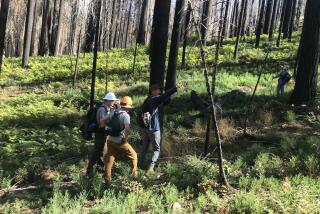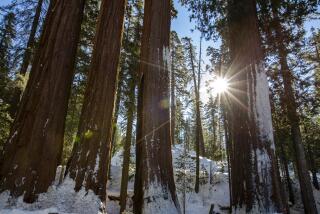Must Reads: National Park Service cancels controlled burn near Earth’s largest tree
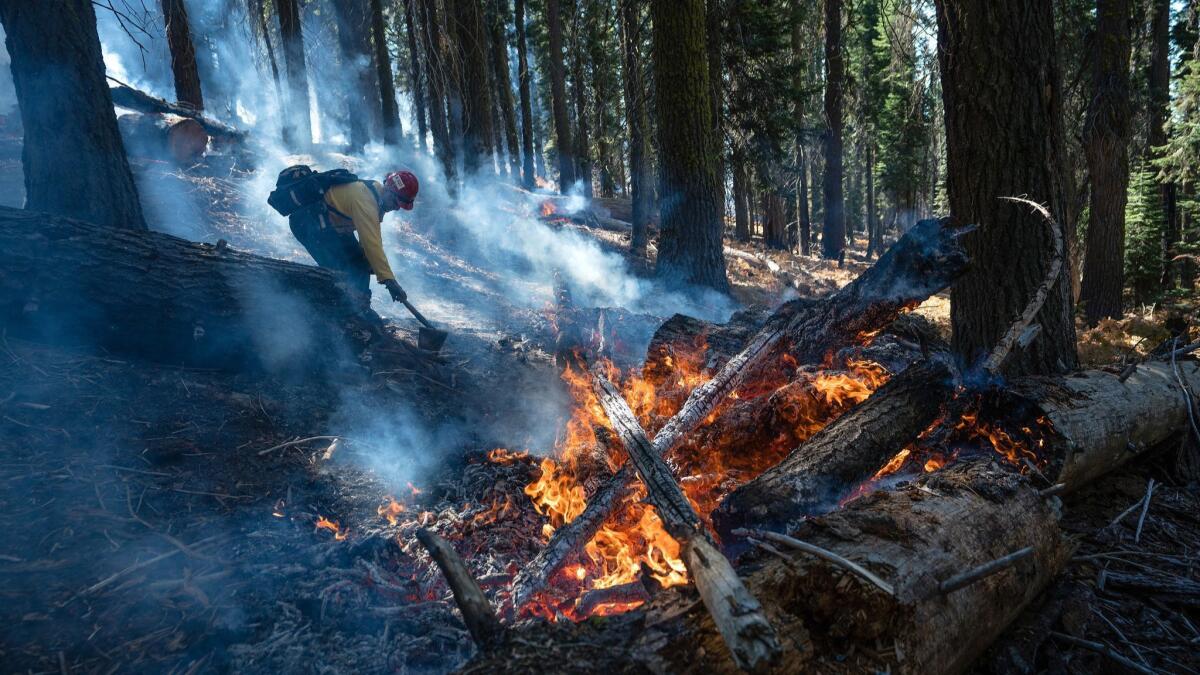
A National Park Service plan to set fire to an ancient sequoia grove in western Sierra Nevada has been canceled for the second time this year, further delaying a delicate forestry operation aimed at triggering new growth near the world’s largest tree.
The controlled burn in Sequoia and Kings Canyon national parks was expected to blacken 483 acres in the Giant Forest, a cathedral-like grove of sequoias straddling Generals Highway. The carefully tended fire was expected to last seven days, but was canceled Friday after a test fire failed to consume vegetation fast enough for the plan to work, according to Mike Theune, a fire information officer with the National Park Service.
California’s famed General Sherman Tree and other giant sequoias have evolved in a manner that allows them to not only survive periodic wildfires, but also thrive in their aftermath. The towering trees are wrapped in a thick, fire-resistant bark, and their cones release seeds when exposed to heat. Fire also helps to clear the forest floor and expose nutrients that allow the fallen seeds to germinate.
Since the 1960s, the U.S. Forest Service has used intentionally set fires to foster new growth of giant sequoias. Before conducting a controlled burn, however, operation managers have to consider the moisture content of the vegetation that will burn, wind conditions and the chance that firefighters might be called to help out on wildfires elsewhere in the state, Theune said.

Although vegetation appeared to be dry enough for a controlled burn during the planning stage, a test fire on Friday did not burn as intensely as officials hoped, Theune said.
Accelerating the controlled burn with drip torches — devices that drop burning diesel fuel and gasoline onto dry brush — would have been too dangerous for firefighters and would have increased the risk of the fire getting out of control, Theune said. The goal is to have a moderately burning fire that clears overgrowth and makes room for the next generation of plant life, among other things.
“The reason we don’t try to force it and use more firefighters with drip torches is it comes back to safety,” Theune said. “Are we going to put firefighters at risk? It’s your return on investment. What is going to give us the best outcome that’s not only safe for our crews but also what is healthiest for the forest?”
The Park Service will monitor conditions going forward to determine when they can launch the prescribed fire for the Giant Forest. No timetable was immediately set, officials said Sunday.
Sequoia and Kings Canyon officials deliberately burn between 1,100 and 1,500 acres of forestland annually to manage forest health. But one of its other benefits — mitigating wildfires — has taken on greater importance as California experiences a surge in deadly and destructive blazes.
Not all federal lands are suited for prescribed burns, Theune said. Some landscapes might be too rugged to manage safely and others are too overgrown so officials have to wait for Mother Nature to take the lead.
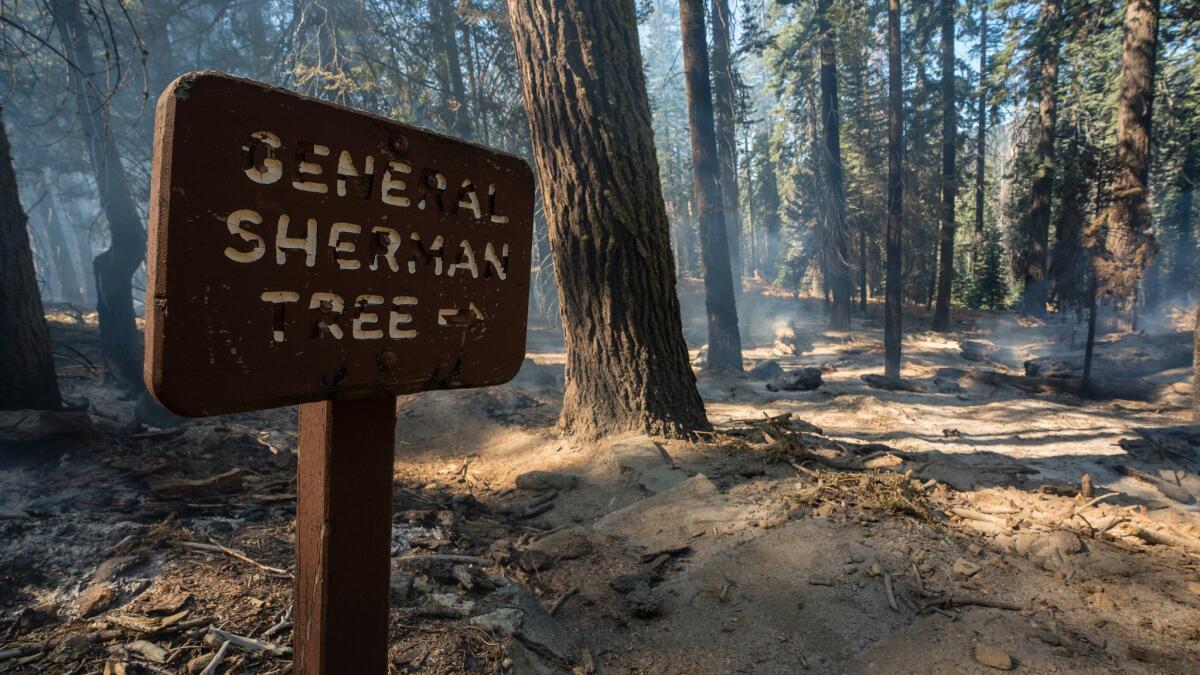
The Giant Forest has been under a prescribed fire regimen for decades. So, even though officials have had to cancel burns twice this year, it’s not as bad as some areas and can be revisited at a future date, Theune said. Assigning a never-before-treated area for a controlled burn can take years because it has to be surveyed for relevant infrastructure and archaeological or historical artifacts as well as environmental impacts, funding, weather and logistics.
For the controlled burn in the Sequoia and Kings Canyon parks, the plan was for the fire to chew through most of the fuel bed and to knock down dead trees and snags. But all of the necessary conditions have to be in place for the burn to be most effective.
“We’re giving a prescription the way a doctor gives a prescription of medication,” Theune said. “We’re trying to work within the prescription to get desired outcomes and effects.”
The prescribed burn, called the Sherman Prescribed Fire because of its proximity to the famous tree, was originally scheduled to take place in June. It was called off because smoke from the fire would not have dispersed adequately and would have smothered surrounding communities.
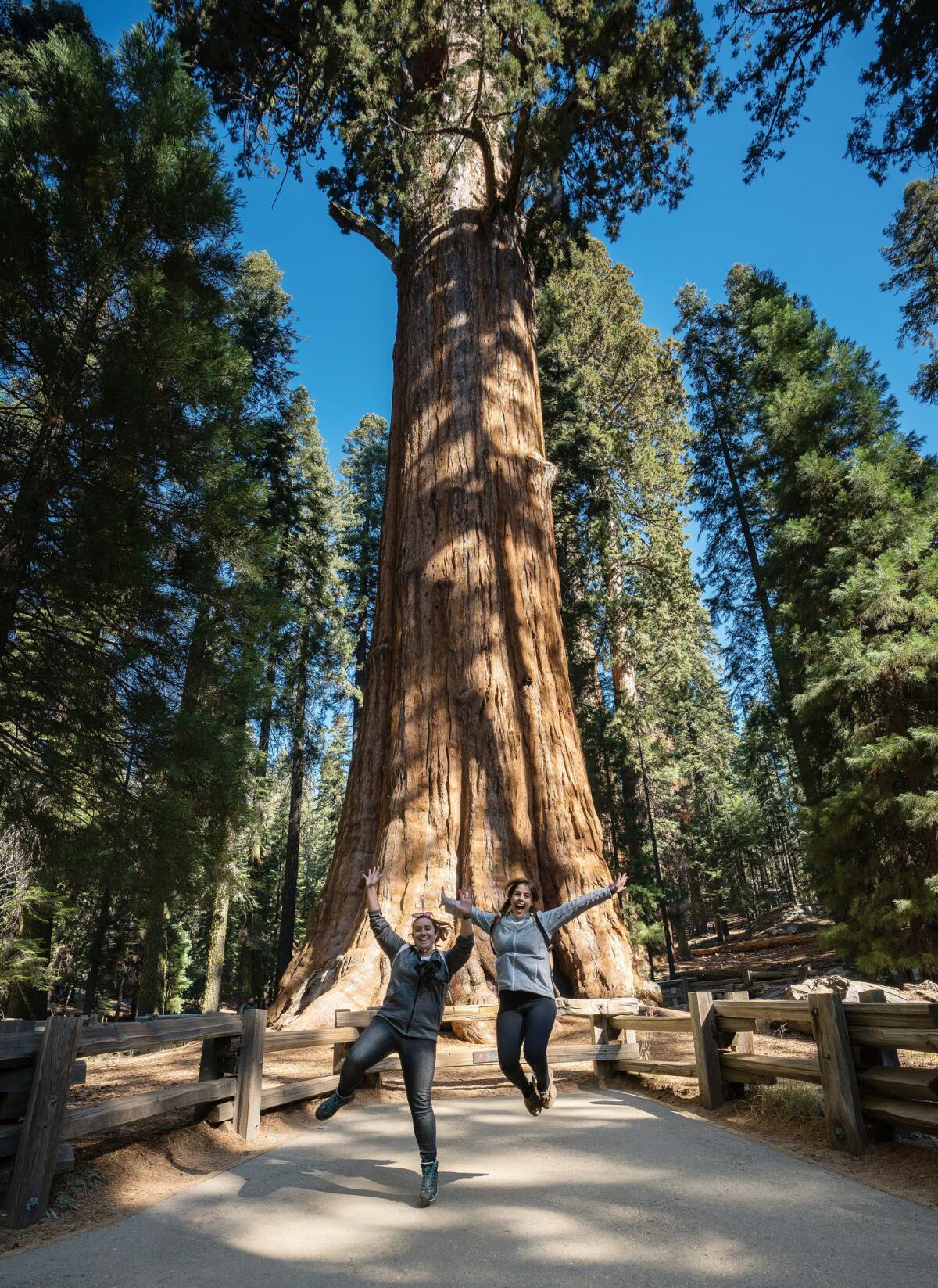
Friday’s attempt was called off after crews burned three acres outside the grove and found that “10-hour fuels” — items slightly denser than grass, like sticks and twigs, that take up to 10 hours to completely consume — were not helping the fire spread. The winds were too light to help, Theune said. Park officials spent the weekend monitoring the fire and let it burn itself out.
Clearing the forest of dead trees also helps to minimize wildfire behavior. That point was effectively illustrated in 2015 when the 150,000-acre Rough fire entered Sequoia National Park.
Thanks to a regimen of prescribed burns in Sequoia and Kings Canyon parks since the 1960s, there’s been little undergrowth to exacerbate a fire. The trees are also adequately spaced apart with enough room to grow with bark thick enough to prevent serious damage or to slow a fire from spreading, Theune said.
When flames from the Rough fire reached Grant Grove, a community of towering sequoias on the park’s western edge near the Fresno and Tulare county line, the trees were able to resist the flames.
That’s because those areas of Sequoia and Kings Canyon national parks are regularly treated with fires as part of their ecosystem — preferably through natural dry lightning strikes but if not, then by park firefighters, according to the Park Service.
Flames will rake the landscape, reducing competition for precious resources and burn open holes in the canopy, giving saplings an opportunity to soak up the sun. Although full-grown sequoias have bark thick enough to withstand a fiery onslaught, they also use the heat to dry out and open their seed cones to spawn future generations.
Park officials treat different parts of the forest every year and will treat the same area only once every five to 20 years, depending on the history of fire in that particular area, Theune said.
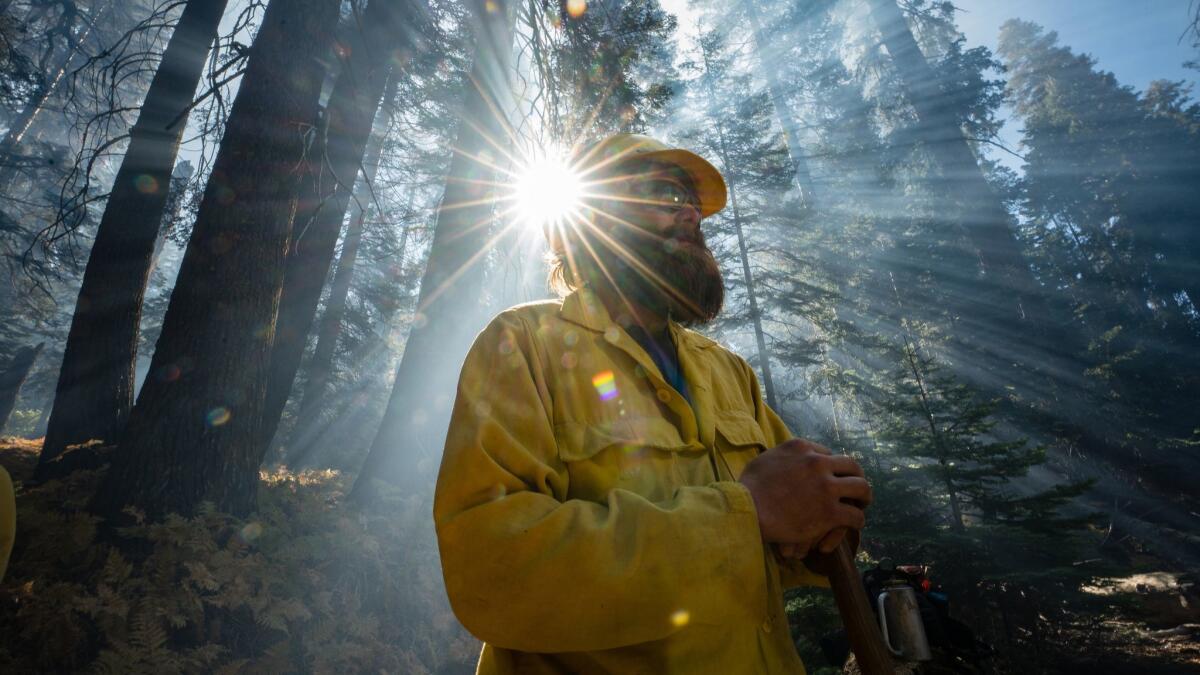
But it wasn’t always this way. Following the Big Blowup fire in 1910 that scorched more than 3 million acres and killed 85 people in Washington, Idaho and Montana, the federal government adopted a strict extinguish-all-fires policy in its jurisdiction.
It wasn’t until the 1960s, when officials noticed that there were no young sequoias growing among the ancient behemoths they’d been protecting that the agency reassessed its approach. The Park Service now relies on fire scars visible in tree rings to determine how often fires burned through a particular area and tries to mirror that cycle in a controlled way, Theune said.
“Being able to restore low-intensity fire to the landscape not only protects these special areas, it’s really beneficial when there’s a wildfire,” Theune said. “It’s a reset for the forest.”
For breaking California news, follow @JosephSerna on Twitter.
More to Read
Start your day right
Sign up for Essential California for news, features and recommendations from the L.A. Times and beyond in your inbox six days a week.
You may occasionally receive promotional content from the Los Angeles Times.
